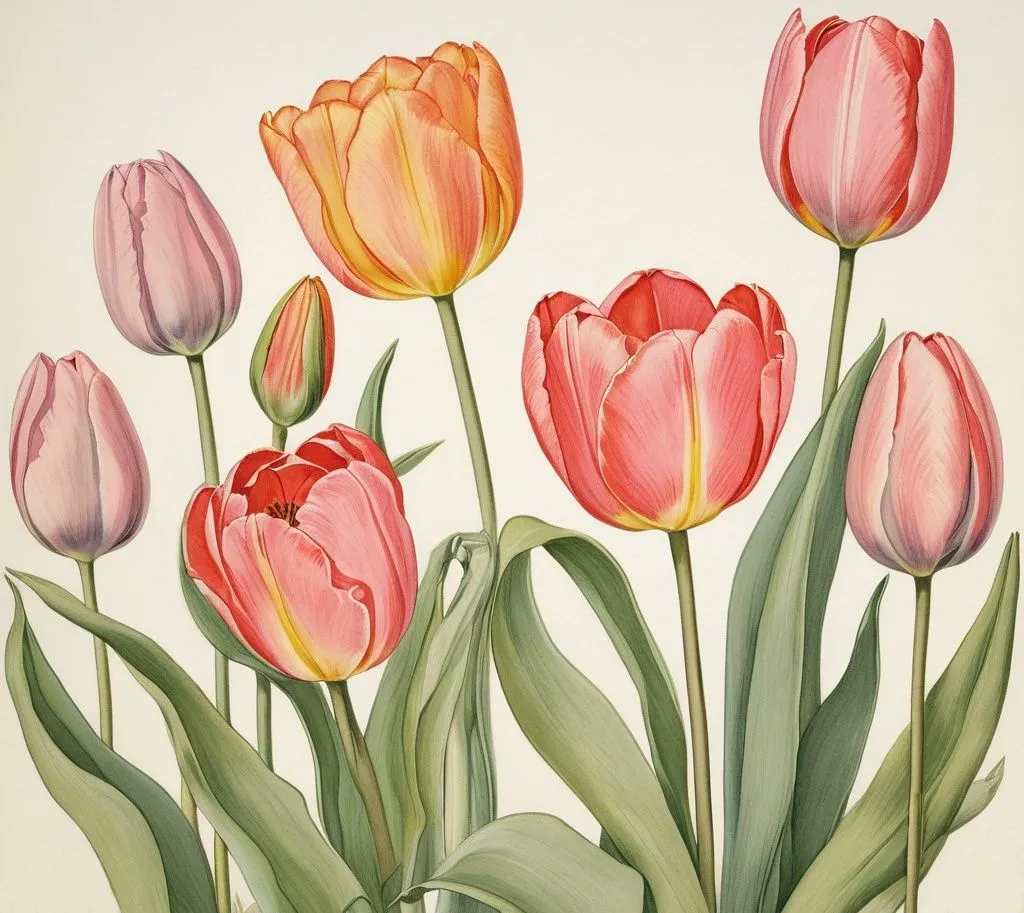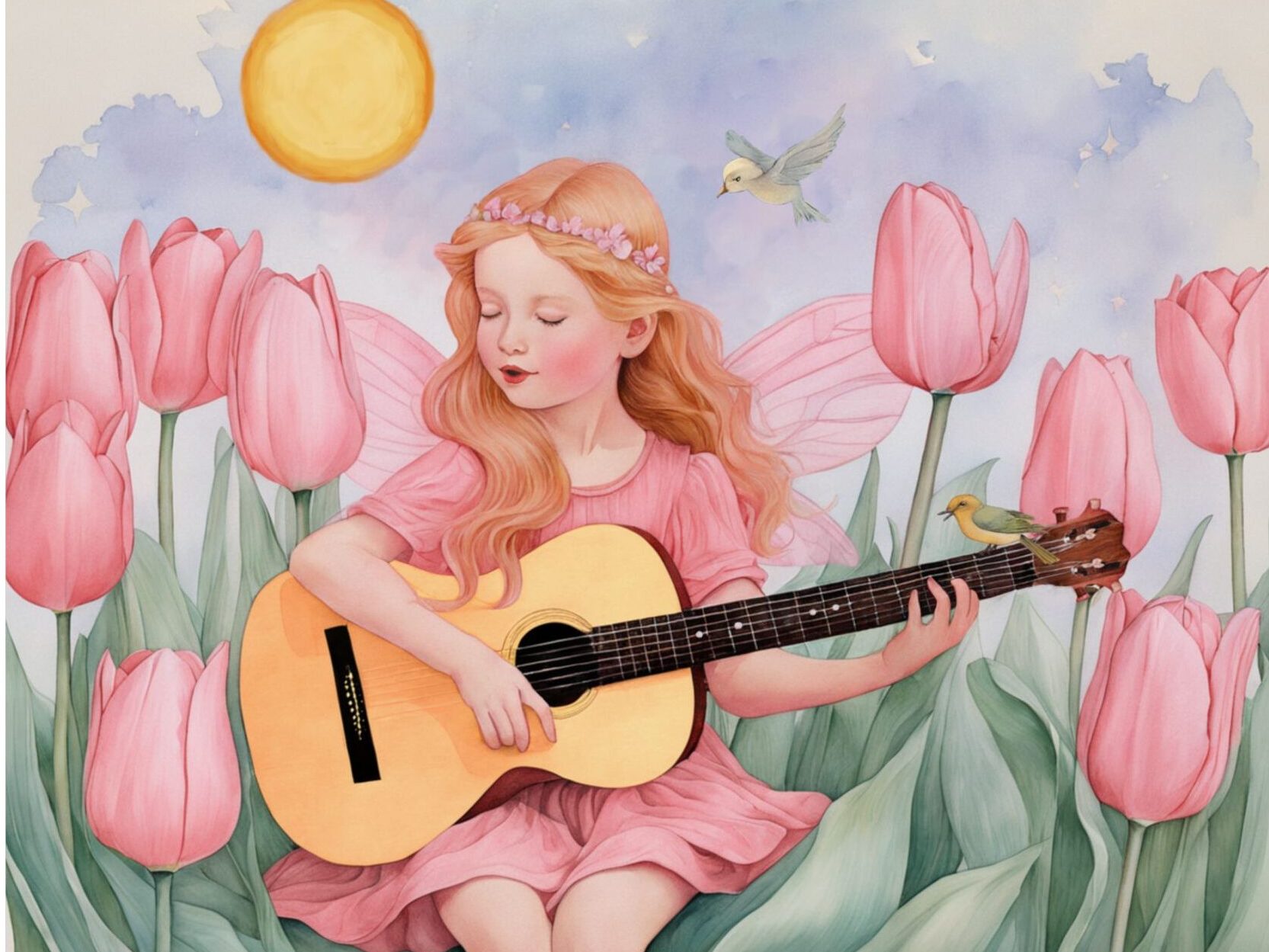Hamburg
Germany
Monday to Friday: 9AM - 7PM

The Timeless Symbolism of the Tulip
The tulip — elegant, vibrant, and steeped in meaning — has long captured the imagination of poets, storytellers, and lovers alike. Its graceful form and striking colors have inspired myths that speak of devotion, transformation, and the delicate balance between joy and sorrow.
Unlike delicate spring blooms that whisper of fragility, the tulip stands tall and unwavering, a symbol of passion and strength cloaked in elegance. Its message is bold yet refined — a flower that speaks directly to the heart.
A Tale of Love and Sacrifice
One of the most famous legends surrounding the tulip originates in Persia. The story tells of a young man named Farhad, a stonecutter who fell deeply in love with the beautiful princess Shirin. Hearing false news that Shirin had died, Farhad was overcome with grief. In his despair, he wandered into the wilderness, where he flung himself from the cliffs. From each drop of his blood that touched the earth, a crimson tulip bloomed — vibrant red, like a heart split open.
Because of this tale, red tulips have become a symbol of undying love and the ultimate sacrifice. To this day, they are often seen as a declaration of deep affection — a way to say, “My love for you is true, even unto death.”
“I said to the tulip, ‘Why such haste?’
It bowed its head and answered, ‘I bloom today,
For tomorrow I may be gone.’”The Persian poet Hafiz
Tulips and the Ottoman Empire
In Turkish culture, the tulip holds an especially sacred place. The word lale (tulip) is composed of the same letters as the name Allah in Arabic, making it a powerful symbol of divine beauty and perfection. During the Ottoman Empire’s “Tulip Era,” the flower became a sign of abundance, prosperity, and peace. Lavish tulip gardens filled palace courtyards, and artisans painted the flower on textiles, tiles, and manuscripts as a reminder of life’s fleeting beauty — a delicate bloom that flourishes, then fades.
The tulip’s connection to both spiritual reverence and earthly pleasure creates a captivating tension. Like the tulip itself, life is both radiant and fragile — to be cherished before it slips away.

Tulips in Greek Mythology
In Greek mythology, the tulip is sometimes linked to tragic love stories, much like the tale of Adonis and Aphrodite. One lesser-known legend tells of a nymph who fell in love with a mortal man. The gods, fearing the dangers of such a union, transformed her into a tulip to protect her purity and preserve her from heartbreak.
This story reinforces the tulip’s symbolism of unwavering love and loyalty — the willingness to sacrifice for the sake of what is pure and true.
“Just as the tulip drinks in the light,
So may we raise our hearts to the sun —
Reaching upwards, seeking warmth,
Knowing the bloom will be brief yet radiant.”Rainer Maria Rilke
A Symbol of Renewal and Hope
While the snowdrop whispers of spring’s earliest stirrings, the tulip arrives boldly, announcing that the season has fully awakened. In European folklore, tulips were often seen as flowers of protection, guarding homes from evil spirits. It was said that fairies would shelter beneath their petals on rainy spring nights, finding refuge within their colorful cups.
Tulips have also been tied to themes of rebirth. Emerging from dormant bulbs hidden beneath the soil, they speak of the quiet miracles unfolding unseen in dark places — a reminder that life’s beauty often takes root long before we witness it.
The Language of Tulips
In the Victorian language of flowers, the tulip carried distinct meanings depending on its color:
Perhaps no other flower so boldly reveals the complexity of human emotion — love, pride, humility, and hope — all reflected in its spectrum of hues.
The Quiet Wisdom of the Tulip
There’s something about the tulip that feels both grounded and ethereal — a flower that neither demands attention nor shrinks from it. It stands with quiet dignity, its petals unfolding slowly yet purposefully.
Perhaps that is the tulip’s greatest lesson — to bloom when the time is right, neither before nor after. It reminds us that beauty is not something to be chased, but something to be revealed when we trust the rhythm of life’s seasons.
As you pass a bed of tulips this spring, consider what they quietly teach — that love can be fierce, hope can rise from despair, and that there is immense power in standing tall, even in fragile moments.
For as poet Mary Oliver once wrote:
“Instructions for living a life:
Pay attention.
Be astonished.
Tell about it.”
And what better guide for astonishment than the tulip — a blossom that turns its face to the sun, daring to shine with all its colors, no matter how brief the season may be.